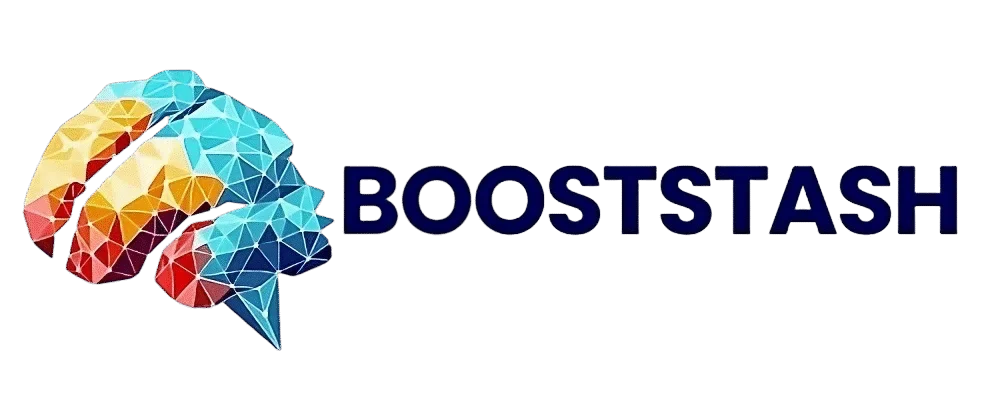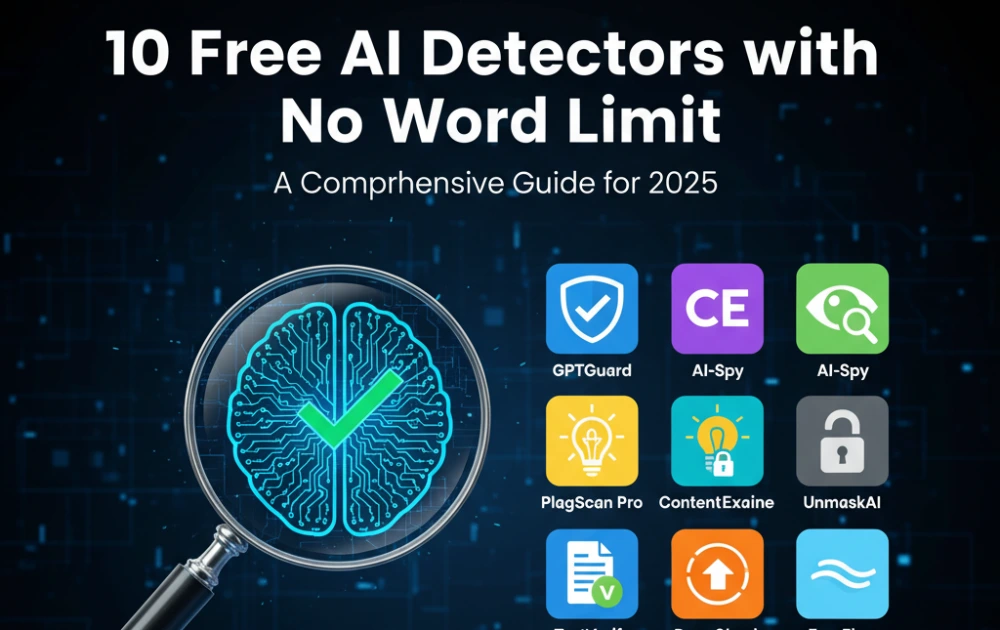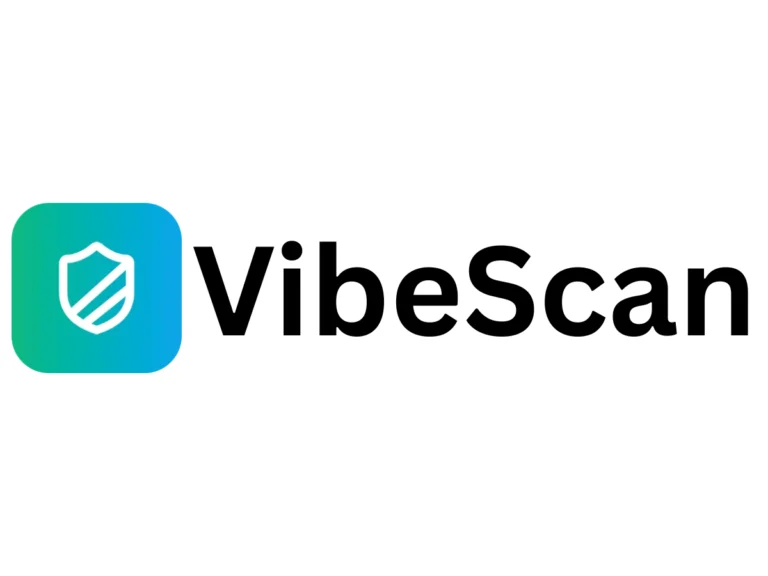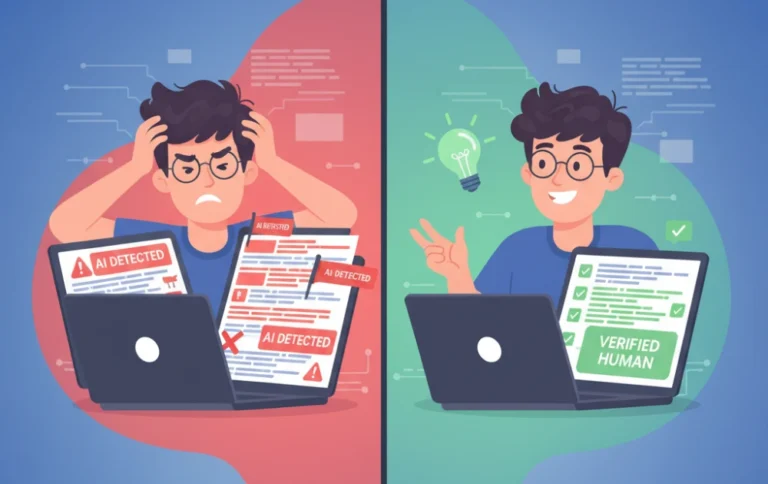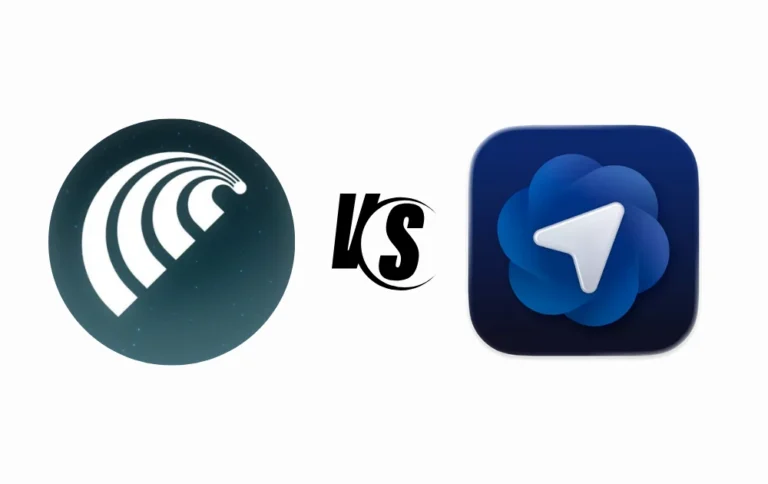10 Best Free AI Detectors: Unlimited (2025)
Over the past few years, I’ve tested dozens of AI detection tools—some impressive, others disappointing. One frustration I kept running into? Word limits. You’d paste in a 3,000-word article only to be told you need to upgrade to check the whole thing.
That’s why I put together this guide. If you’re a student verifying your work, an educator checking assignments, or a content creator ensuring originality, you need tools that actually work—without arbitrary restrictions.
Below, I’ll walk you through 10 free AI detectors with no word limit, breaking down what each one does well, where it falls short, and which situations they’re best suited for.
Table of Contents
- Why Word Limits Matter (And Why They’re Frustrating)
- What Makes a Good AI Detector?
- 1. Scribbr AI Detector
- 2. Copyleaks AI Content Detector
- 3. GPTZero
- 4. Writer.com AI Content Detector
- 5. Originality.AI (Limited Free Version)
- 6. Content at Scale AI Detector
- 7. Sapling AI Detector
- 8. Crossplag AI Content Detector
- 9. Hix AI Detector
- 10. ZeroGPT
- How I Test These Tools
- Limitations of AI Detectors (What You Need to Know)
- Which Tool Should You Choose?
- The Future of AI Detection
- Final Thoughts
Why Word Limits Matter (And Why They’re Frustrating)
Most AI detectors cap free users at 500–1,500 words. That might work for a blog intro, but it’s useless for:
- Academic papers (typically 3,000+ words)
- Long-form content (guides, whitepapers, reports)
- Bulk content audits (checking multiple articles at once)
When I’m reviewing a 5,000-word piece, I don’t want to chop it into five separate scans. I want one comprehensive analysis. That’s what these tools offer.
What Makes a Good AI Detector?
Before diving into the list, here’s what I look for when evaluating these tools:
- Accuracy: Does it correctly identify AI-generated text without too many false positives?
- Speed: Can it analyze long documents quickly?
- Transparency: Does it explain why it flagged certain sections?
- Ease of use: Is the interface clean and intuitive?
- No hidden catches: Are there daily limits, account requirements, or sudden paywalls?
Now, let’s get into the tools.

1. Scribbr AI Detector
Best for: Academic writing and student work
Scribbr is one of the most reliable free AI detectors I’ve used. It’s designed with academic integrity in mind, which means it’s particularly good at analyzing essays, research papers, and dissertations.
What I like
- No word limit on free scans
- Clean, intuitive interface
- Highlights specific sections flagged as AI-generated
- Provides a percentage score for AI probability
What to watch out for
- Can be conservative—sometimes flags human-written text with advanced vocabulary
- Limited to one scan at a time (no bulk uploads)
Best use case: If you’re a student double-checking your essay or a professor verifying submissions, this is my top recommendation.
2. Copyleaks AI Content Detector
Best for: Professional content creators and marketers
Copyleaks has been in the plagiarism detection space for years, and their AI detector is equally robust. I’ve used it extensively for long-form content audits.
What I like
- No word limit on the free version
- Fast processing, even for 10,000+ word documents
- Shows AI probability by paragraph
- Supports multiple languages
What to watch out for
- Requires account creation (but it’s free)
- Occasional false positives with highly technical content
Best use case: Great for content teams who need to verify large volumes of text quickly.
3. GPTZero
Best for: Educators and institutions
GPTZero was one of the first AI detectors built specifically to combat ChatGPT-generated submissions. It’s evolved significantly since its early days.
What I like
- No word limit for free users
- “Document-level” analysis that looks at patterns across the entire text
- Highlights the most suspicious sentences
- Chrome extension available
What to watch out for
- Can struggle with mixed content (human edits to AI text)
- Interface feels a bit cluttered
Best use case: Teachers and professors managing multiple student submissions.
4. Writer.com AI Content Detector
Best for: Business and enterprise content
Writer.com’s detector is designed for teams managing brand content. I’ve found it particularly useful for checking marketing copy and website content.
What I like
- Unlimited free scans
- Clean, professional interface
- Fast results (usually under 10 seconds)
- Good at detecting GPT-4 and Claude-generated content
What to watch out for
- Less detailed feedback than some competitors
- Focuses more on “AI vs. human” binary rather than nuanced scoring
Best use case: Marketing teams and content managers who need quick verification.
5. Originality.AI (Limited Free Version)
Best for: Content publishers and SEO professionals
Originality.AI is primarily a paid tool, but they offer a limited free version that’s still quite useful. I include it here because when you do get free credits, there’s no word limit.
What I like
- Highly accurate (in my testing, it has the best detection rate)
- Scans for both AI content and plagiarism simultaneously
- Detailed scoring breakdown
- Team collaboration features
What to watch out for
- Free version gives you limited scans (not truly unlimited)
- Requires payment for regular use
Best use case: If you’re serious about content authenticity and don’t mind eventual payment, start here.
6. Content at Scale AI Detector
Best for: SEO content and blog posts
This detector comes from a company that creates AI content tools, which gives them unique insight into detection. I’ve found it particularly good with SEO-optimized articles.
What I like
- Completely free with no word limit
- Color-coded highlighting (red = likely AI, green = likely human)
- Shows predictability scoring
- No account required
What to watch out for
- Can be overly sensitive with formulaic content
- Less accurate with creative or narrative writing
Best use case: Bloggers and SEO professionals checking long-form articles.
7. Sapling AI Detector
Best for: Technical and business writing
Sapling’s detector excels with professional and technical content. I’ve had good results using it for whitepapers and technical documentation.
What I like
- No word limit
- Fast analysis
- Good with technical jargon and industry-specific language
- Simple percentage output
What to watch out for
- Less detailed feedback than competitors
- Limited explanation of why content was flagged
Best use case: Technical writers and B2B content teams.
8. Crossplag AI Content Detector
Best for: Multilingual content
Crossplag supports over 100 languages, making it invaluable if you work with international content. I’ve tested it with Spanish, French, and German text with good results.
What I like
- No word limit
- Excellent multilingual support
- Combined plagiarism and AI detection
- Clean interface
What to watch out for
- Slightly slower processing for very long documents
- Accuracy varies by language
Best use case: Anyone working with non-English content or international teams.
9. Hix AI Detector
Best for: Quick checks and casual use
Hix offers a straightforward, no-frills AI detector that gets the job done. I use it when I need a fast second opinion.
What I like
- Completely free, no registration
- No word limit
- Extremely fast results
- Mobile-friendly
What to watch out for
- Less sophisticated than premium tools
- Limited detail in reporting
Best use case: Quick spot-checks and preliminary scans.
10. ZeroGPT
Best for: Academic institutions and bulk checking
ZeroGPT has built a strong reputation in educational settings. Their free tier is surprisingly generous.
What I like
- No word limit on individual scans
- Batch upload feature (paste multiple texts)
- Detailed sentence-by-sentence analysis
- API available for developers
What to watch out for
- Can produce inconsistent results with heavily edited content
- Interface feels dated
Best use case: Schools and universities processing multiple submissions.
How I Test These Tools
To ensure this list is actually useful, I ran each detector through a consistent testing process:
- Pure AI text (generated by ChatGPT, Claude, and GPT-4)
- Pure human text (from published books and my own writing)
- Mixed content (AI-generated, then heavily edited by humans)
- Technical content (code documentation, research papers)
- Creative content (fiction, poetry, narrative essays)
I measured accuracy, speed, false positive rates, and user experience. The tools above performed best across these categories.
Limitations of AI Detectors (What You Need to Know)
Here’s something important I’ve learned after testing hundreds of documents: No AI detector is 100% accurate.
Even the best tools struggle with:
- Heavy editing: If someone generates AI text and then substantially rewrites it, detection becomes much harder
- Prompt engineering: Advanced users can prompt AI tools to write in ways that evade detection
- Technical content: Highly structured or formulaic writing (like legal documents) often gets falsely flagged
- False positives: I’ve seen human-written articles flagged as “likely AI”
My advice: Use these tools as one data point, not the final verdict. If you’re an educator, combine detector results with your knowledge of the student’s writing style. If you’re a content manager, look for patterns rather than relying on a single scan.
Which Tool Should You Choose?
Here’s my quick recommendation matrix based on your situation:
| Your Situation | Recommended Tool(s) |
|---|---|
| Student or academic | Scribbr or GPTZero |
| Content creator or marketer | Copyleaks or Writer.com |
| International/multilingual work | Crossplag |
| Maximum accuracy needed | Originality.AI |
| Quick, casual checks | Hix or Content at Scale |
| Bulk educational checking | ZeroGPT |
| Technical documentation | Sapling |
The Future of AI Detection
AI detection is an arms race. As AI writing tools become more sophisticated, detectors must evolve too. I expect we’ll see:
- More focus on stylometric analysis (writing patterns unique to individuals)
- Watermarking built into AI models themselves
- Blockchain-based verification for authentic human content
- Integration with institutional systems (like Canvas or Google Classroom)
For now, these free tools give you a solid foundation for verification—just remember they’re tools to inform judgment, not replace it.
Final Thoughts
After years of working with digital tools and AI systems, I’ve learned that transparency and verification matter more than ever. Whether you’re protecting academic integrity, ensuring content authenticity, or simply satisfying your own curiosity, having access to reliable AI detectors—without arbitrary word limits—is essential.
I keep several of these tools bookmarked and use them regularly depending on the context. My daily drivers are Copyleaks for professional work and Scribbr for academic content, but I’ll cross-reference with others when I need additional confidence.
Your next step: Bookmark 2-3 of these tools that fit your specific needs. Test them with content you know the origin of to build confidence in their results. And remember—use them as helpful guides, not infallible judges.
Have you used any of these AI detectors? I’m always curious to hear about real-world experiences, especially edge cases where they performed surprisingly well (or poorly). The technology is evolving fast, and testing feedback helps all of us make better decisions. For a deeper comparison of leading tools, check out our comprehensive guide to the best AI detectors and learn about Chrome extensions for AI detection, or compare Turnitin vs GPTZero for your specific needs.
